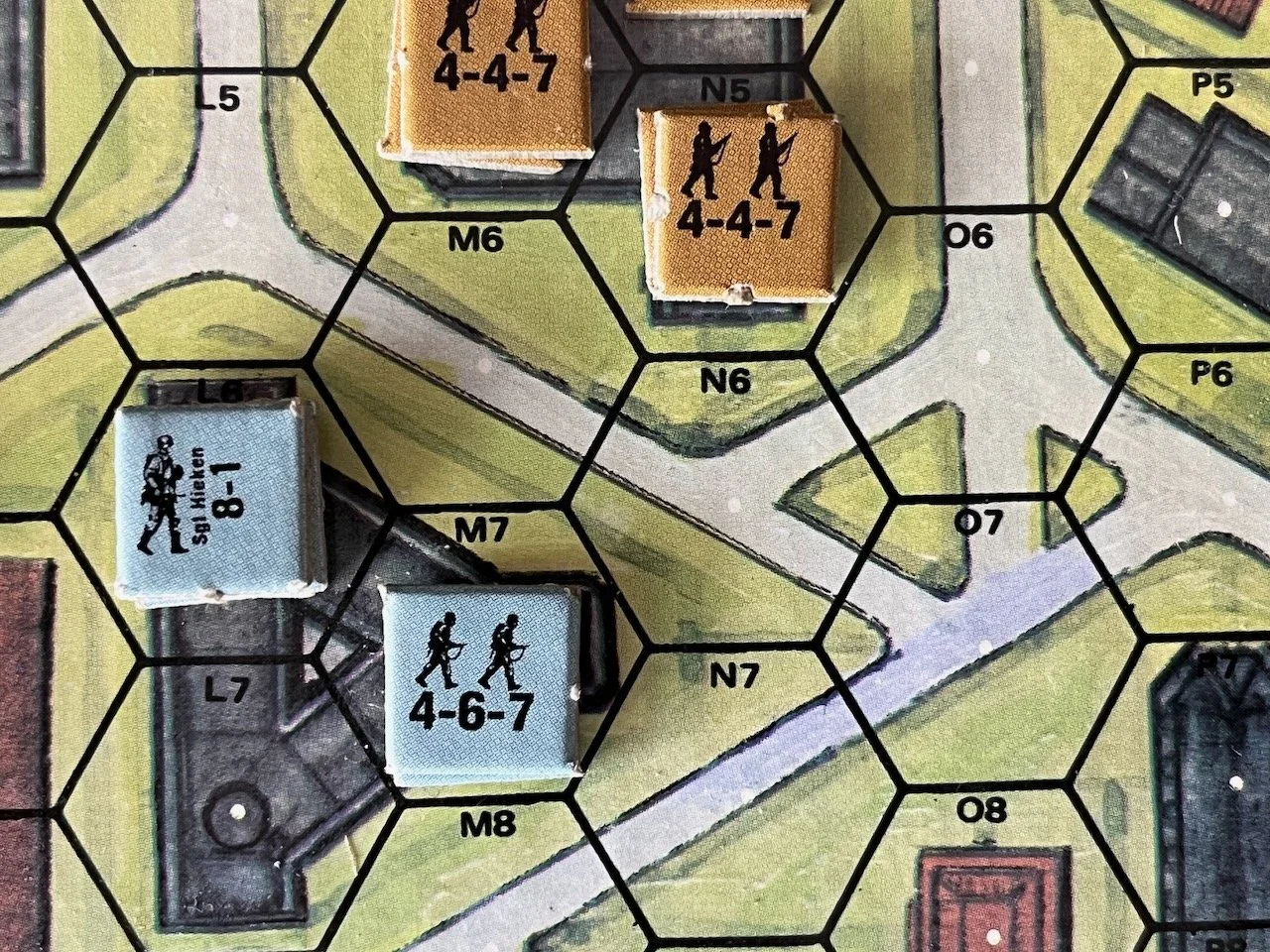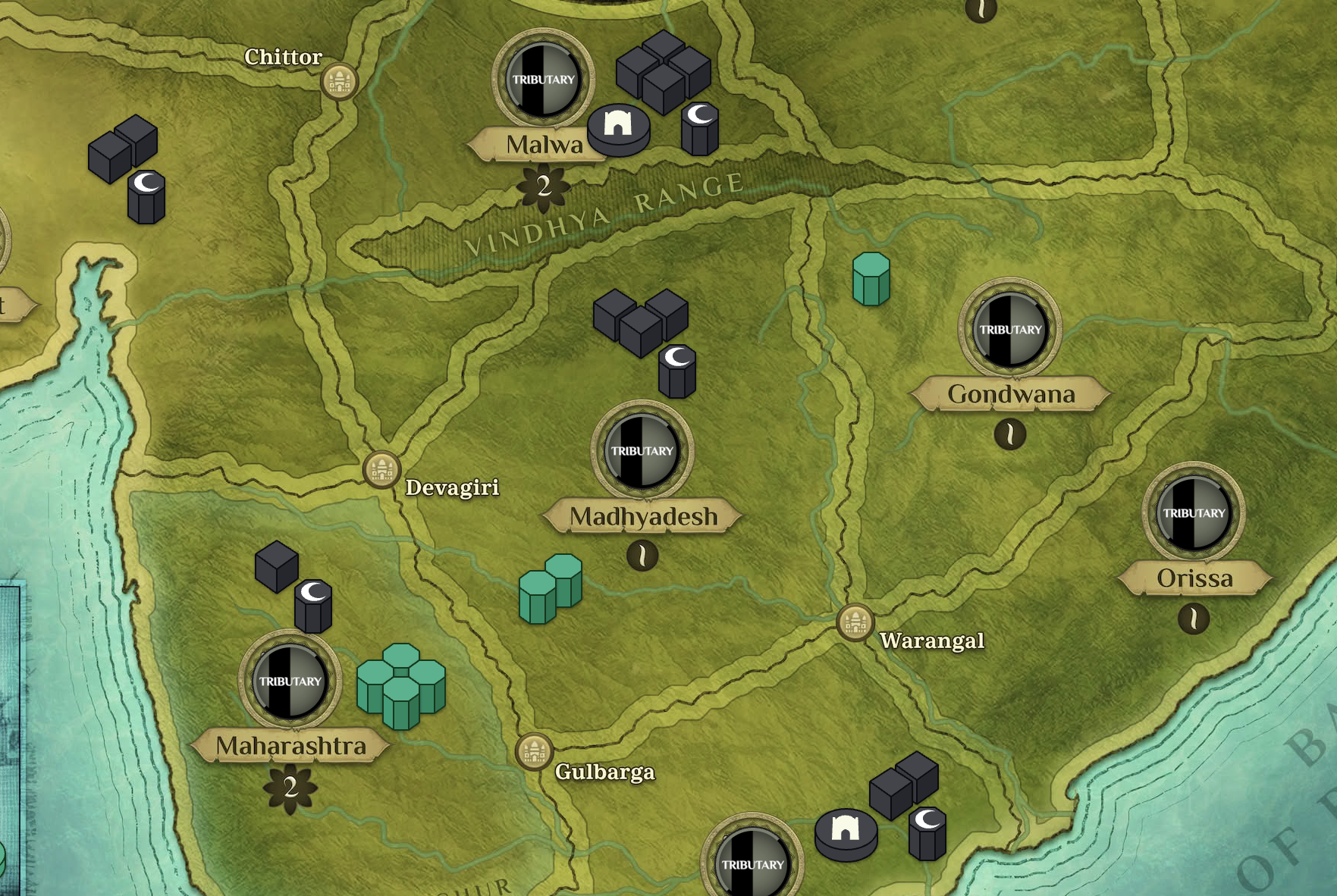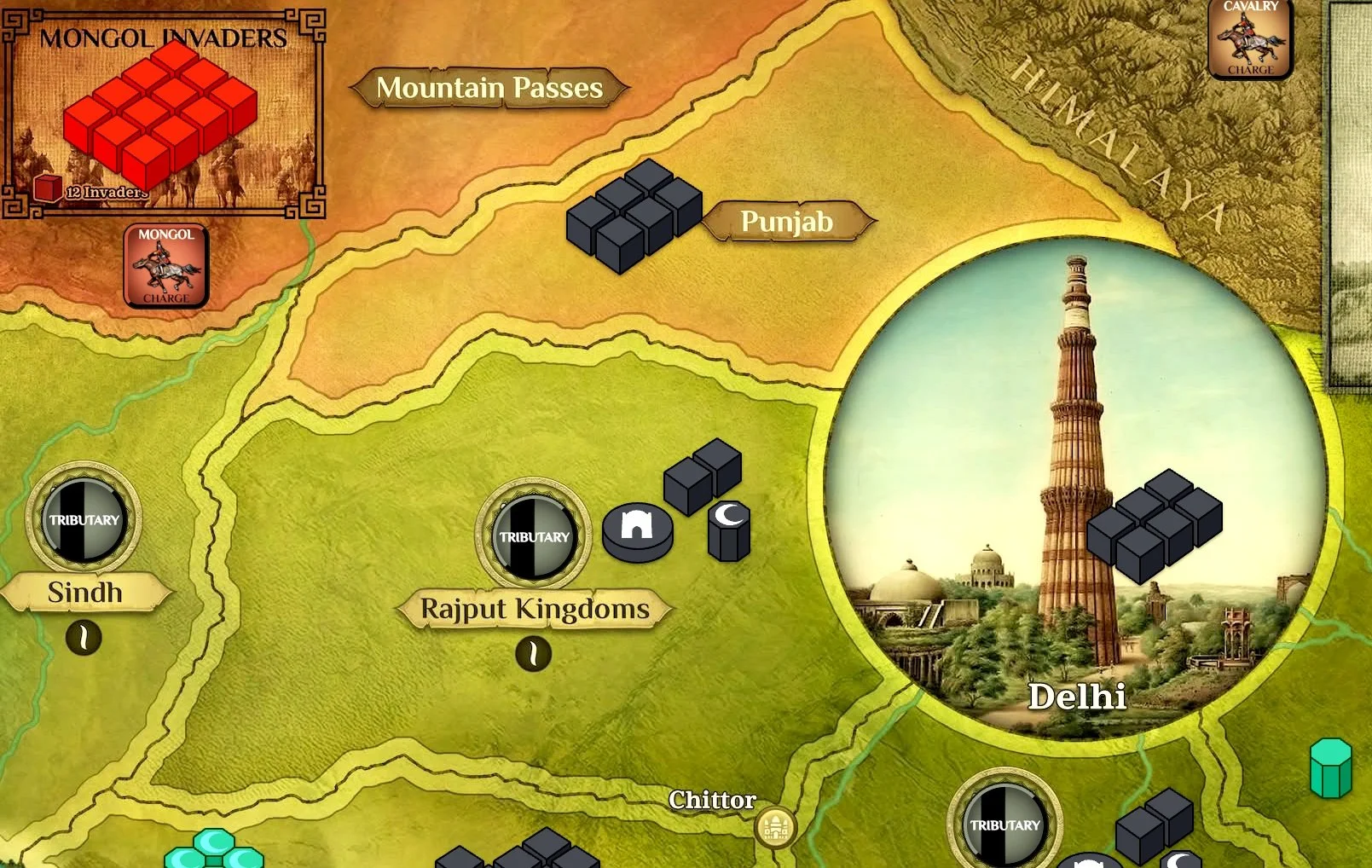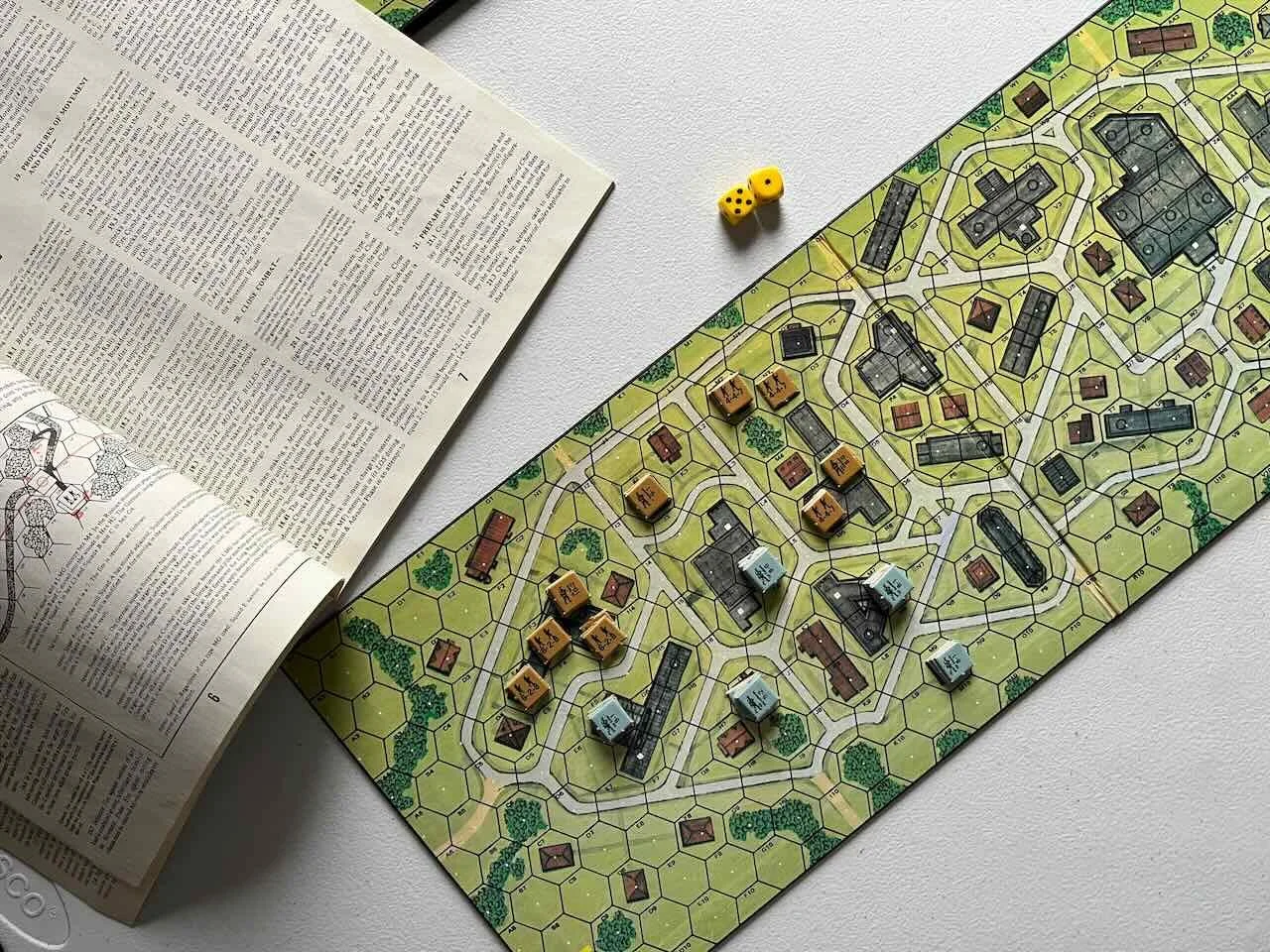Avalon Hill Squad Leader: There’s More to Scenario 1 Than I Thought
I thought I had Scenario 1 of Squad Leader solved. But in Stalingrad, Scenario 1 solves you.
This is adapted from the script of Episode 97, “Sykes-Picot Plays With Colonial History (And Dry-Erase Markers)”
With a couple early wins — one as the Germans and one as the Russians — I arrogantly assumed that Scenario 1: The Guards Counterattack from Avalon Hill’s Squad Leader had shown us everything it had.
But a fateful die roll showed me I was wrong. I was pushing to move ahead to Scenario 2, which adds deadlier support weapons, a bigger battleground, and other wrinkles. Noisy Andrew rolled a die to determine if we replayed Scenario 1 or moved on. We stayed in the training dojo.
Avalon Hill Squad Leader Scenario 1 - The Guards Counterattack: The Guards are about to do some dumb shit
To keep myself entertained — it was my turn to be the Russians again — I did a bit of meta-roleplaying. What if I discarded my usual mindset?
I’m a naturally cautious player who wants to take risks only at the edges. I get anxious at the thought of wagering the big stacks on the table. But this time I decided to start throwing haymakers the first chance I got. Oh, my. A different game appeared. The usual simmer of ranged exchanges and late rushes turned into a rolling boil of wild scenes and tough calls.
Consider this sequence: The Russians only have one support weapon for this one, and it’s in the hands of an OK commander and a single squad who starts the game at the top of the board. His most obvious job is to direct that gun and make the Germans in the nearest building rethink their whole shit, which his squad does early with some fine gunnery.
The next turn, I rush everyone who I think will survive the first wave of German defensive fire. Commander So-and-So and his squad lug the gun out into the open, practically staring into the windows of a German-occupied building. The German commander in that building mans a light machine gun himself because his squads are all broken. It would normally be a long-odds shot because officers in this game should only jump on a support weapon by themselves if there are no other options, which there aren’t.
But it’s a point blank shot and I’m sitting out in the middle of a road. His volley breaks my one squad. They run back to the house! Leaving So-and-So sitting there with the gun all by himself!
Two can play that game. The Russian officer cusses and racks it up. His point blank Advance Fire kills the broken German squads inside the building. It’s just the officers now. I use my Advance option to push the Russian officer right onto his position, pistol drawn. It comes down to one heads-up roll. My officer is killed. Hopefully the sniveling dipshits who ran away saw the example and will remember their duty to Mother Russia the next time the chips are down.
At the same time this is happening, my 37th Guards take a building to the west at great cost, smashing the forward German position, but immediately coming under heavy fire. Squads are breaking left and right because while they’ve taken the building, they’re now fair game for the Kraut’s well-rested reserve positions, one of whom somehow manages to break or jam all three of their machine guns in the span of a turn. (This gutbuster is probably why I’m still even in this one.)
I still have to take a building to win the scenario and I’m running out of guys to do it with. Just one hard push and it’s a different game, more contact, more lines of sight, more decisions and drama radiating out of every hex.
As this gambit stands now, my Russians are into two buildings, but they’ve fought themselves to depletion in the face of German counterfire — and that superhero German officer who bashed my officer’s head in with a heavy glass ashtray is still in the second building, waiting for another of my commanders to close distance.
What a thrill. What a scene. I love being wrong about stuff.
Vijayanagara: First Play in India’s Rough-and-Tumble 14th Century
My first experience in the Irregular Conflict Series takes me to 14th Century India with Vijayanagara: The Deccan Empires of Medieval India 1290-1398 from GMT Games.
This is adapted from the script of Episode 95: Vijayanagara Review or How I Learned to Stop Worrying and Love the Bahmani.
So as it turns out, when you’re playing as the Sultanate in Vijayanagara: Deccan Empires of Medieval India 1290-1398 from GMT Games, your enemies, the Bahmani and the Vijayanagara kingdoms, will not sit and behave while you try to beat back Tamerlane and his Mongol horsemen, who show up a few times during the game to wreck your shit.
Vijayanagara Game 2: Did I learn my lesson from Game 1? Playing again as the Sultanate, I open by dispatching ruthless Governors far and wide.
The challenger Bhamani and Vijayanagara forces start out the game like small rashes you notice on your arm before you go to bed. Then the iron-fisted bastards who were running Delhi during the opening game give way to a new dynasty, the Rebel command becomes available, and you wake up covered in them.
By midgame, regions that were firmly loyal are answering to new Rajas and Amirs as they build their power bases, pushing north, turning your vassals into theirs, and hollowing out your tax base. Your dreamy days of commissioning lavish minarets and creating fountains of cash from whichever tributary you squeeze are coming to an end.
Vijayanagara is built on a game system called the Irregular Conflicts Series, which is in turn the child of an older system called the CounterInsurgency, or COIN, series. These game systems let you step into a given era of historical conflict and take the part of a major faction or nation in one of these struggles. The game arc can span decades or even centuries in an afternoon.
You will be subject to the major economic, cultural and military inflection points of the time: succession crises, invasions, new technology, and more reel off the event deck every turn: Can you ride the turmoil or be engulfed by it when, for example, the Diamond Mines of Golconda start kicking out loot or when a Sultanate army wanders off into the Hindu Kush Mountains and vanishes? Each of these let opportunists destabilize your position or vice versa.
The event cards, during which each of the three factions usually gets a chance to capitalize, kick off the excitingly stingy ration of actions, along with the opportunity cost anxiety of the game’s action selections: Each faction has its own powerful commands that it can activate to take territory or secure a sphere of influence on the beautiful map, but taking the most powerful options means you’re sitting out the next turn. Do you take a less powerful action in order to stay in the flow or accept the forced cooldown so you can make a bigger dent in the board? It’s not easy. While the Sultanate has a pretty firm grip up north, you share lots of borders with your hungry upstarts down south, and they’re gonna eat.
Plus, there’s the Mongols to think about: the Timurid empire was routinely stomping through northern India and I know they’re going to launch a big assault for the game finale. I have more than 200,000 troops in Delhi and I’m dying to head South into the Malwa District and stomp out the Bahmanis and tear down every brick of the annoying fort they built there, but I feel handcuffed because it’s the home stretch and Tamerlane could pull up on me any minute along with his many, many eager riders.
GMT Games’ Vijayanagara: That’s an awful lot of Mongols you’ve got up there. Got something planned, Timur?
Unless I catch a lucky event, it would take me a whole turn to march down to Malwa, and another one to attack. I already spent a turn there executing some sassy Rajas and turning Malwa back into a tributary, but now they’ve booted out by governors in the Rajput kingdoms.
The array of forces in Vijayanagara are never clean. Pieces from multiple factions can co-comingle in a region for several turns, vibrating with menace and potential chaos. More than once I’d log on to take a turn and see that previously compliant regions had erupted into full-scale naughtiness and the game had a whole new face. Imagine a busy lunch spot with one of those big communal tables, except everybody at the table has a gun next to their plate and they’re staring you down while you try to read the menu.
The game is full of moments like this and they get brighter and bloodier down the home stretch: As I write this, the Vijayanagara have 10 victory points, and the Bahmani and my Sultanate are tied at 9. In one sense, I’m on pins and needles; on the other hand, I’m just happy to still be in it, even with my dynasty’s best days, by design, far behind it.
On a wider note: This experience is giving me a taste of those glorious “knife fight in a phone booth” nights I haven’t had since my last games of Chaos in the Old World, Game of Thrones 2nd Edition and Cyclades, when we made that first big leap from Risk’s modeling of “dudes on a map” to see just how deliciously fraught a territory control game could be.
There are some things that solo play cannot duplicate: That feeling of peril and of people pushing against you, triggering three setbacks on any given day when you’ve got the resources to stop one. That sick feeling of watching yourself dip on the victory point track, seeing your opponents openly conspire to clip your wings, and realizing the best you can do is lash out because you wrong-footed yourself two turns ago.
Because we’re playing online via RallyTheTroops.com and our players are in the U.S., Canada and Poland, it can be quite a bit of time between turns. But that’s OK, because being able to pop up the rules and reference cards from my RtT room and do some patient reading is a big plus.
The implementation of the game is lovely. The prompts and highlights the game feeds you on your turn, the game log that shows what just happened, all feels very tight and helps you quickly understand the “what” and “how” of executing a turn, even if strategy comes slowly. I highly recommend taking a look at the collection of games there.
So laurels for Rally the Troops and thanks to my patient opponents, Dave of Dude! Take Your Turn and Michal of The Boardgame Chronicles, who have been merrily carving off chunks of my Sultanate for 10+ days now. Best hazing ritual ever. I’m eager for the chance to apply what I’ve learned to a second try at running the Sultanate.
I also want the physical copy of this one because it plays solo, too, but last I looked, the first printing was a hit and I saw one copy being offered for $300. GMT Games, the publisher, has their own in-house crowdfunding mechanism with its P500 series.
If 500 people pledge — at a price well below retail — it gets a second printing. Right now it’s just over 200, so if a couple of my listeners could just head over to the GMT website and pledge a few hundred copies, that would really speed things along, thanks.
Learning Avalon Hill’s Squad Leader, Which I Put Off for 40 Years
I put off learning Avalon HIll’s Squad Leader for 40 years. Finding an online big bro who knew the rules by heart was the lantern I needed to explore this cardboard Shangri-La.
This is adapted from the script of Episode 94: Avalon Hill Squad Leader - Shots Fired After Owning This for 40 Years.
It looks like the opening exchanges of building-to-building fire wobbled the German squads across the lane. Can I take these fuckers in a rush with the rugged elements of the 37th Guards?
Turns out I can, but they dart through an alert German MG team’s field of fire on the way. This was the cost of that little sprint:
First blood: I lost six squads in my first-ever charge. Gotta learn somehow.
Their sprint crossed the merest sliver of an alert German machine gun squads’ field of fire. An expensive jog, but what the Russians lack in command acumen and support weapons in Scenario 1: The Guards Counterattack, they make up for in numbers. The survivors enter the building and stomp out the remaining Germans there in both hand-to-hand fighting and a short, lethal exchange of fire down hallways and staircases.
This old hex map and its tiny counters now seem lit from within. Getting to finally play this game feels like finding an old roadster in a barn and getting it on the road — a model still driven today by a dedicated subset of wargame lovers because they love this legendary system and its successor — Advanced Squad Leader — so much. I’m starting to see why.
A Bit of Background for Our Readers Who Either Don’t Know Anything About Wargames or Who Think They Don’t Like Them, But Who Are Wrong
Squad Leader was released in the 1970s by Avalon Hill publishing, one of the two big strategy publishers of the time, the other being rival SPI.
A whole generation of military history nuts who wanted to fight the big battles out for themselves with historically accurate units and conditions were relitigating the Eastern Front, the great 19th Century wars of the Continent, the U.S. Civil War and more. There was a race to put out creative and rigorous designs that fed these subterranean armchair generals the right balance of scale, realism, and strategy vs. the chaotic fates of the battlefield.
Squad Leader entered as a full-on squad-level simulation exercise. The main categories of action are just firing and moving. But almost every real-world consideration of those fundamental activities are governed by formal metrics: Did you move before you fired? What’s your terrain in relation to your target’s? How much stuff are you hauling when you move, and across what? How’s your morale? What’s the skill level of your officers? When your rifle squad freaked out and ran — which happens in this game because sustained machine gun fire can riffle-shuffle anybody’s nervous system — do they have to hide in hex K5 or L4?
Every consideration is codified in a rulebook and reference cards whose tables look like they might have been purloined from the working real-life command HQ: Infantry Fire Tables, Close Combat Tables, Support Weapons Charts, Movement, Terrain, and even a droll little chart for what happens if you try to sneak around in a sewer. Roll a die! 1-4, successful. 5-6, lost. Think of the granular combat considerations of, say, older versions of Dungeons and Dragons pointed at their operational essence, except you don’t have to think up what your characters say around the campfire. The action is the story. And it’s a vivid one.
Ain’t she purty
But I don’t have to think about sewers yet, thankfully. In addition to its dense but well-written rules and the cohesion of its modeling, Squad Leader’s designers also rolled out a tool they called Programmed Instruction: a series of 12 scenarios — six from the Eastern Front with Russians vs Germans, another six from Western Europe late in the war with Germans vs. the U.S. — that feed the complexity to you in chunks.
Section 1 is a firefight in Stalingrad that only puts you in charge of men and machine guns. Scenario 2 lets you play around with flamethrowers for the first time, use demo charges, smoke cover, concealed units, and learn the quantitative joys of individual unit fanaticism. And so on, until you’re finally able to graduate yourself to even more complicated stuff like vehicles and artillery.
But even Scenario 1 is a beast if you come at it cold. A bigger beast if you have nobody who will attempt it with you.
While simultaneously exploring my seasonal affective disorder (amateur prognosis) and GMT’s Storm Above the Reich over the winter, I sang this jeremiad:
I was talking to dudes on BGG’s Squad Leader forum about the copy of the game that The Moms got me for Christmas in 1979. She knew I was into WWII history and war movies, because weren’t we all?
I was 10. I opened it, gawped at each bit of it, and put it away. Some of the dudes on the BGG forum mentioned a common denominator: “My big brother and his friends…” They got to learn it under the wing of some adolescents.
And I realize it doesn’t matter how cool these games are unless somebody is there with you, moored at the point of fascination and raised on the broth of brotherhood. And I stopped shopping a bunch of wargames I liked that YouTubers were talking about when I realized I wasn’t shopping for a game. I was shopping for a big brother I never had, or friends I had and don’t have anymore.
As it turns out, I did have a big bro to teach me. When I repeated this complaint on Discord to longtime friend of the show Noisy Andrew, he made this thrilling claim: He knows all the rules for Scenario 1 (The Guards Counterattack) by heart, notching a 100% accuracy rate when his last opponent looked up his rule citations. Now this was a lantern I could follow into this impenetrable cardboard Shangri-La.
We downloaded the Vassal tabletop emulator. He even did the heavy lifting of figuring out the software and Squad Leader module. We are now in our third week of successfully straddling the Perth-Starkville time zones for one-turn sessions and I’m having the time of my life.
We are in Scenario 1 for a second time and now I’m learning to look for that one early exchange of fire that tells me I have to shore up a flank and keep my head down…or follow that wisp of blood in the water to a weak spot that’s ripe for the chomping. I go to bed with the footage drawing itself in my head; even misfortunes that happened on my side of the ledger are vivid and satisfying.
Now that Noisy has given me a working frame of the action sequence, I now have occasion to set up my physical copy so I can retrace the finer points of the rules. They’re a lot easier to read once you’ve seen some action. My general experience with crunchy games is that digesting the crunch is not only a minor thrill of achievement, it delivers a richer experience.
Which is why what’s happening here is way beyond a thumbs-up or thumbs-down proposition. Hex-and-counter wargames are a subset of a subset. On sight, these creations are either hilariously off-putting or they’re as irresistible as the deep-memory drumbeat of the sun that lures the characters of JG Ballard’s The Drowned World south to vanish into the book’s florid, mutated Triassic swamps.
The fellas are gonna laugh when they find out I didn’t use proper clippers.
While I cover newer games—the level of passion and creativity in tabletop design is boggling—I have been digging backwards more in all my media consumption, as things redolent with real human work are more and more appealing as the automated, the synthetic, the simulated engulfs everything.
Why fret about whether the sludge I'm looking at everywhere is human or bot when I can pick up, say, the Joseph Conrad book on my furnace cabinet and know a human made it? No guessing. No looking down the mirror hall. Regular consciousness and representing it with language, as we'll find in the wrestling matches of the great artists, is complicated enough! Why the hell do I need profit-motivated Silicon Valley mutants posing profit-driven additional conversations on top? The inexhaustible riches of the near past are there for the taking.
Squad Leader is categorically beautiful for this reason: Looking at the hundreds of tiny cardboard counters, you can hear the chug of an offset press as the Avalon Hill team — probably wild with sleeplessness — watches the first proof run emerge.
Reading the steps for managing a unit that’s crumpled under fire, you can feel the long hours alone and the waypoints of fierce crosstalk as assumptions are playtested.
Right as I finish this section of the script, I see the mail gal put a white package at the door of my addition: That would be the specialized Squad Leader counter trays I ordered. That means I’ll be spending some time this weekend with a cold one on the table, happily clipping and sorting every single piece, fully immersed in the small and happy ministrations of one of the many small pockets of the world that VCs and private equity haven’t figured out how to ruin.
You’ll never find me today, you bastards.
Today I am unprofitable, and therefore, if just for a few hours, free.










